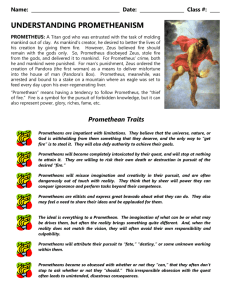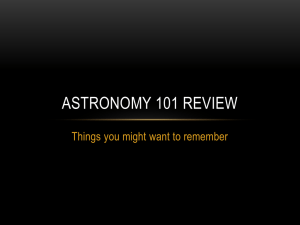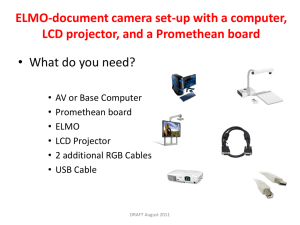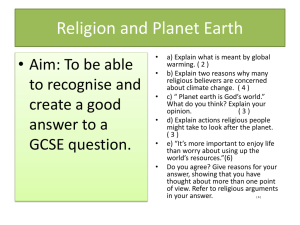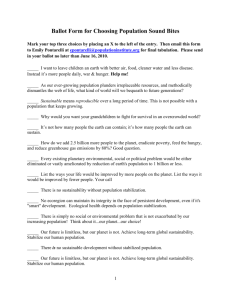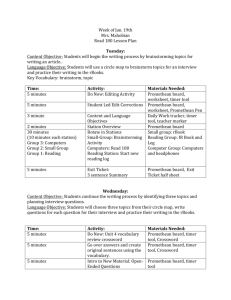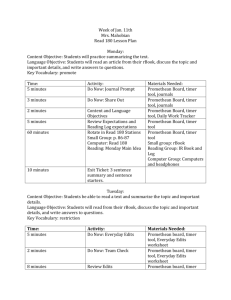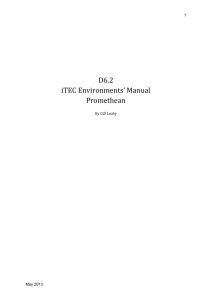Third Grade Science Instructional Resources
advertisement
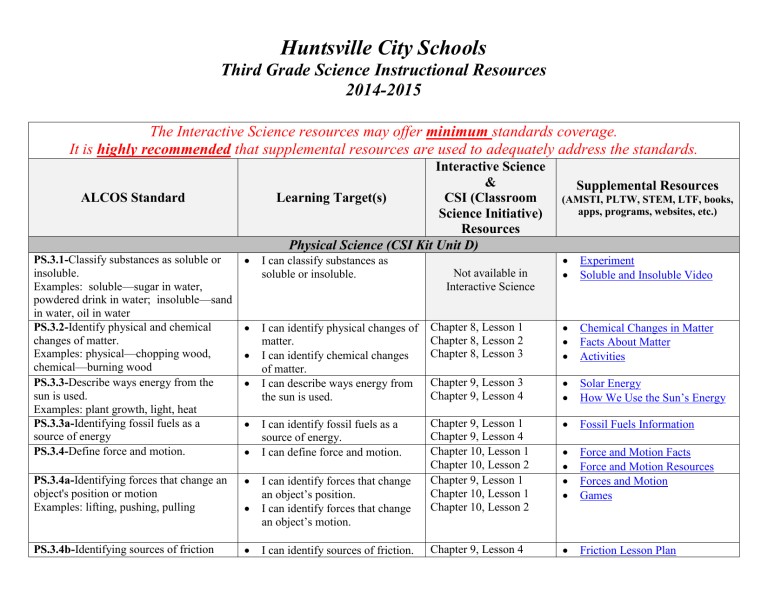
Huntsville City Schools Third Grade Science Instructional Resources 2014-2015 The Interactive Science resources may offer minimum standards coverage. It is highly recommended that supplemental resources are used to adequately address the standards. Interactive Science & Learning Target(s) CSI (Classroom Science Initiative) Resources Physical Science (CSI Kit Unit D) ALCOS Standard PS.3.1-Classify substances as soluble or insoluble. Examples: soluble—sugar in water, powdered drink in water; insoluble—sand in water, oil in water PS.3.2-Identify physical and chemical changes of matter. Examples: physical—chopping wood, chemical—burning wood PS.3.3-Describe ways energy from the sun is used. Examples: plant growth, light, heat PS.3.3a-Identifying fossil fuels as a source of energy PS.3.4-Define force and motion. PS.3.4a-Identifying forces that change an object's position or motion Examples: lifting, pushing, pulling I can identify forces that change an object’s position. I can identify forces that change an object’s motion. PS.3.4b-Identifying sources of friction I can identify sources of friction. I can classify substances as soluble or insoluble. Not available in Interactive Science Supplemental Resources (AMSTI, PLTW, STEM, LTF, books, apps, programs, websites, etc.) Experiment Soluble and Insoluble Video I can identify physical changes of matter. I can identify chemical changes of matter. I can describe ways energy from the sun is used. Chapter 8, Lesson 1 Chapter 8, Lesson 2 Chapter 8, Lesson 3 Chemical Changes in Matter Facts About Matter Activities Chapter 9, Lesson 3 Chapter 9, Lesson 4 Solar Energy How We Use the Sun’s Energy I can identify fossil fuels as a source of energy. I can define force and motion. Chapter 9, Lesson 1 Chapter 9, Lesson 4 Chapter 10, Lesson 1 Chapter 10, Lesson 2 Chapter 9, Lesson 1 Chapter 10, Lesson 1 Chapter 10, Lesson 2 Fossil Fuels Information Force and Motion Facts Force and Motion Resources Forces and Motion Games Chapter 9, Lesson 4 Friction Lesson Plan Examples: rubbing hands together, applying sandpaper to wood PS.3.4c-Describing the force of gravity PS.3.5-Identify the relationship of simple machines to compound machines. Example: pencil sharpener composed of a wheel and axle, inclined plane, and wedge I can describe the force of gravity. I can identify the relationship of simple machines to compound machines. Interactive Science pg. 378 Chapter 10, Lesson 3 Game Gravity Lesson Chapter 2, Lesson 2 Simple Machines Explained Lesson Plans How the Body Works Information and Links Promethean Planet Facts Kids Biology Sheets Games Article Lesson Constructing Cell Models Facts Sites Quiz/Video Promethean Planet Lesson Book Life Science (CSI Kit Unit B) LS.3.6-Identify structures and functions of the muscular and skeletal systems of the human body. LS.3.7-Describe the life cycle of plants, including seed, seed germination, growth, and reproduction. LS.3.7a-Describing the role of plants in a food chain LS.3.7b-Identifying plant and animal cells I can describe the life cycle of plants. I can describe the role of plants in Chapter 5, Lesson 2 a food chain. I can identify plant cells. I can identify animal cells. Not available in Interactive Science LS.3.7c-Describing how plants occupy space and use light, nutrients, water, and air LS.3.7d-Classifying plants according to their features Examples: evergreen or deciduous, flowering or nonflowering LS.3.7e-Identifying helpful and harmful effects of plants. Examples: helpful—provide food, control erosion; harmful—cause allergic reactions, produce poisons I can identify structures and functions of the muscular system. I can identify structures and functions of the skeletal system. Not available in Interactive Science Chapter 3, Lesson 4 Chapter 3, Lesson 5 I can describe how plants occupy space. I can describe how plants use light, nutrients, water, and air. I can classify plants according to their features. Chapter 3, Lesson 3 Chapter 3, Lesson 1 Plant Biology Presentations I can identify helpful effects of plants. I can identify harmful effects of plants. Chapter 5, Lesson 3 Webquest Facts LS.3.7f-Identifying how bees pollinate flowers LS.3.7g-Identifying photosynthesis as the method used by plants to produce food LS.3.8-Identify how organisms are classified in the Animalia and Plantae kingdoms. LS.3.9-Describe how fossils provide evidence of prehistoric plant life. Example: plant fossils in coal or shale providing evidence of existence of prehistoric ferns LS.3.10-Determine habitat conditions that support plant growth and survival. Examples: deserts support cacti, wetlands support ferns and mosses I can identify how bees pollinate flowers. I can identify photosynthesis as the method used by plants to produce food. I can identify how organisms are classified in the Animalia kingdom. I can identify how organisms are classified in the Plantae kingdom. I can describe how fossils provide evidence of prehistoric plant life. Chapter 3, Lesson 4 page 112 Chapter 3, Lesson 2 Videos Sheets Videos Unit Chapter 4, Lesson 1 Lesson Lesson Facts/Pictures Article Plant Fossils Tad the Tadpole Lesson Muddy Water Earth’s Layers Earth’s Layers Rap Study of the Layers Sorting the Layers Identifying the Layers Classifying Rocks Rocks, Soil, and Change “Rock Talk” Sheet Classifying Quiz Water Cycle Weather Site Types of Clouds Cloud Chart Promethean Planet Cloud Word Sort Not available in Interactive Science I can determine habitat conditions Chapter 5, Lesson 1 that support plant growth and survival. Earth and Space Science (CSI Kit Unit C) ES.3.11-Describe Earth's layers, including inner and outer cores, mantle, and crust. I can describe Earth’s layers. Chapter 6, Lesson 5 pages 248-249 ES.3.11a-Classifying rocks and minerals by characteristics, including streak, color, hardness, magnetism, luster, and texture I can classify rocks and minerals by characteristics. Chapter 6, Lesson 3 Chapter 6, Lesson 4 ES.3.12-Identify conditions that result in specific weather phenomena, including thunderstorms, tornadoes, and hurricanes. I can identify conditions that Chapter 6, Lesson 1 pages 222-223 ES.3.12a-Identifying cloud types associated with specific weather patterns I can identify cloud types associated with specific weather patterns. Not available in Interactive Science ES.3.12b-Identifying positive and negative effects of weather phenomena Examples: positive—flooding deposits good soil when waters recede; negative— flooding kills crops ES.3.12c-Identifying technology used to record and predict weather, including thermometers, barometers, rain gauges, anemometers, and satellites ES.3.12d-Explaining symbols shown on a weather map ES.3.12e-Organizing weather data into tables or charts ES.3.13-Describe ways to sustain natural resources, including recycling, reusing, conserving, and protecting the environment. ES.3.13a-Recognizing the impact of society on human health and environmental conditions I can identify positive effects of weather phenomena. I can identify negative effects of weather phenomena. Chapter 6, Lesson 6 I can identify technology used to record and predict weather. Chapter 6, Lesson 2 I can explain symbols shown on a weather map. ES.3.14-Describe the position of Earth, the moon, and the sun during the course of a day or month. I can organize weather data into tables or charts. I can describe ways to sustain natural resources. I can recognize the impact of society on human health conditions. I can recognize the impact of society on environmental conditions. I can describe the position of Earth during the course of a day or month. I can describe the position of the moon during the course of a day or month. I can describe the position of the sun during the course of a day or Not available in Interactive Science Not available in Interactive Science Not available in Interactive Science Not available in Interactive Science Chapter 7, Lesson 2 page 281 Chapter 7, Lesson 3 Chapter 7, Lesson 4 Cloud Viewer Weather WizKids Effects of Weather Weather Sheets Weather Instruments Tools Symbol Sheets Weather Forecasting Promethean Planet Weather Maps Article Organizing Sheets Weather for Kids Promethean Planet Recycling Resources Benefits of Recycling Videos Classifying Resources Promethean Planet Article Health for Kids Promethean Planet Earth Orbit Promethean Planet Games ES.3.14a-Describing various forms of technology used in observing Earth and its moon month. I can describe various forms of technology used in observing Earth and its moon. Resources for Multiple Standards: http://www.bbc.co.uk/schools/scienceclips/ages/9_10/science_9_10.shtml http://www.internet4classrooms.com/skills_3rd_science_new.htm Chapter 7, Lesson 3 page 301 Tools Promethean Planet


